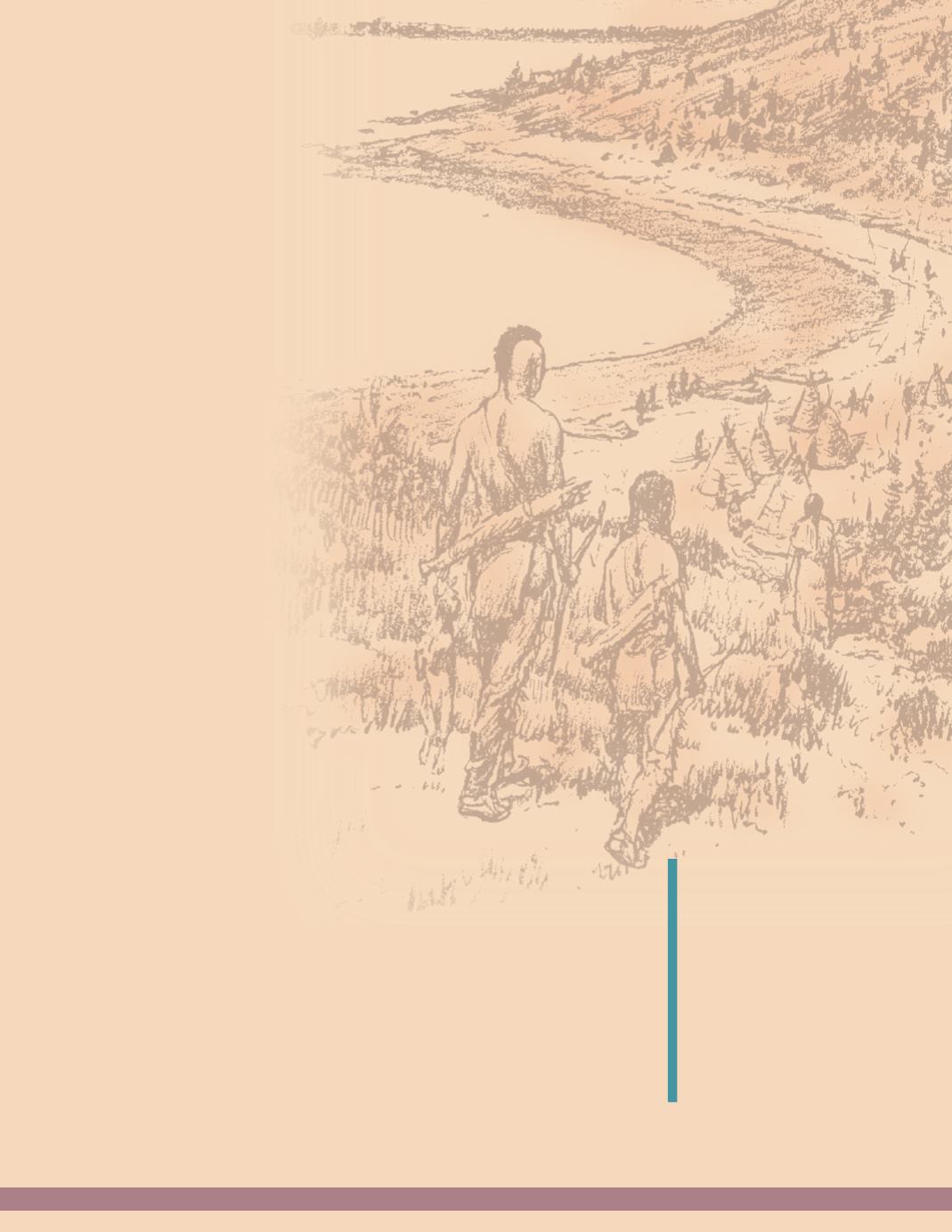
Their Money
The Native Americans had no organized system for printingmoney or
making coins. Trading and
bartering
were themain ways of obtaining items they
needed or wanted. Bartering is giving something (goods or services) in return for
something without the use of money. For example, furs were very much in demand
in Europe. Native Americans would
exchange
furs for weapons and tools from
European traders.
You have probably heard of
wampum
belts
, which weremade from
shells and other ornaments.
They were used earlier by
Indian tribes as ameans of
recording historical events
and folklore. Later, they
became ameans of trading
for ornaments and decorations
as well as a symbol for peace
treaties. A black wampum
belt meant sadness.
Their Transportation
When EasternWoodland
Indians traveled by water, the
canoe
was their mainmeans of
transportation. The Algonquians
built a superior, lighter-weight,
birch bark canoe. In comparison, the
Iroquois constructed canoes out of
a heavier elmbark. Their heavier canoes
did not last as long as the birch bark canoe.
In Pennsylvania, American Indians traveled
more by land than water. By the time Europeans
arrived, they had an elaborate, complex series of trails
crisscrossing our state. They were excellent trail makers
and chose their routes carefully. Many trails were kept
on high, dry ground. When they needed to cross a stream, they chose
the shallowest location.
Native Americansmade different kinds of trails for different reasons.
They had trails for hunting, visiting, trading, and fighting. War paths were
made along higher ground where the dense brush and trees would hide
them from their enemies. If they wanted to visit or trade with other tribes,
they took themost direct route.
The Native Americans did not have road signs or trail markers.
Sometimes, they became lost in the forests. When they did, their rule was
“if lost, check themoss.” Moss was located on the northern side of trees.
Many of our present day highways follow trailsmapped out by the American
Indians. Most trails were so well planned that there was little need for change
of direction until automobiles came along.
TheNative Americans built a
complex systemof trails, which
were well chosen and served
separate purposes such as
hunting, trading, and fighting.
These trails were so well
conceived that there was little
changemade tomost of them
when the European settlers
arrived. Even some of our
roads today follow these
original Native American
pathways.
Native American Inhabitants of Pennsylvania
25


